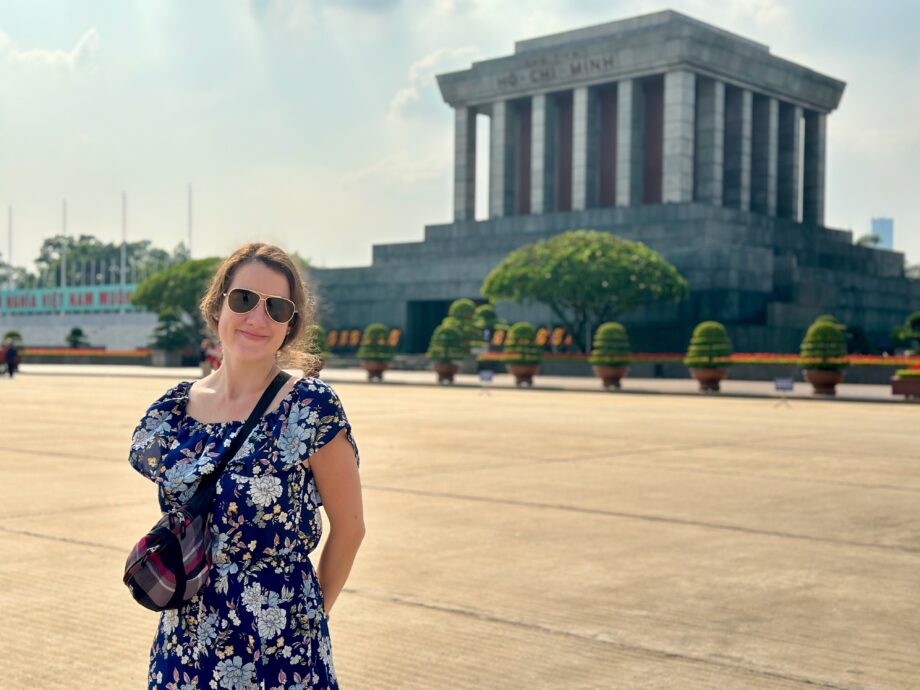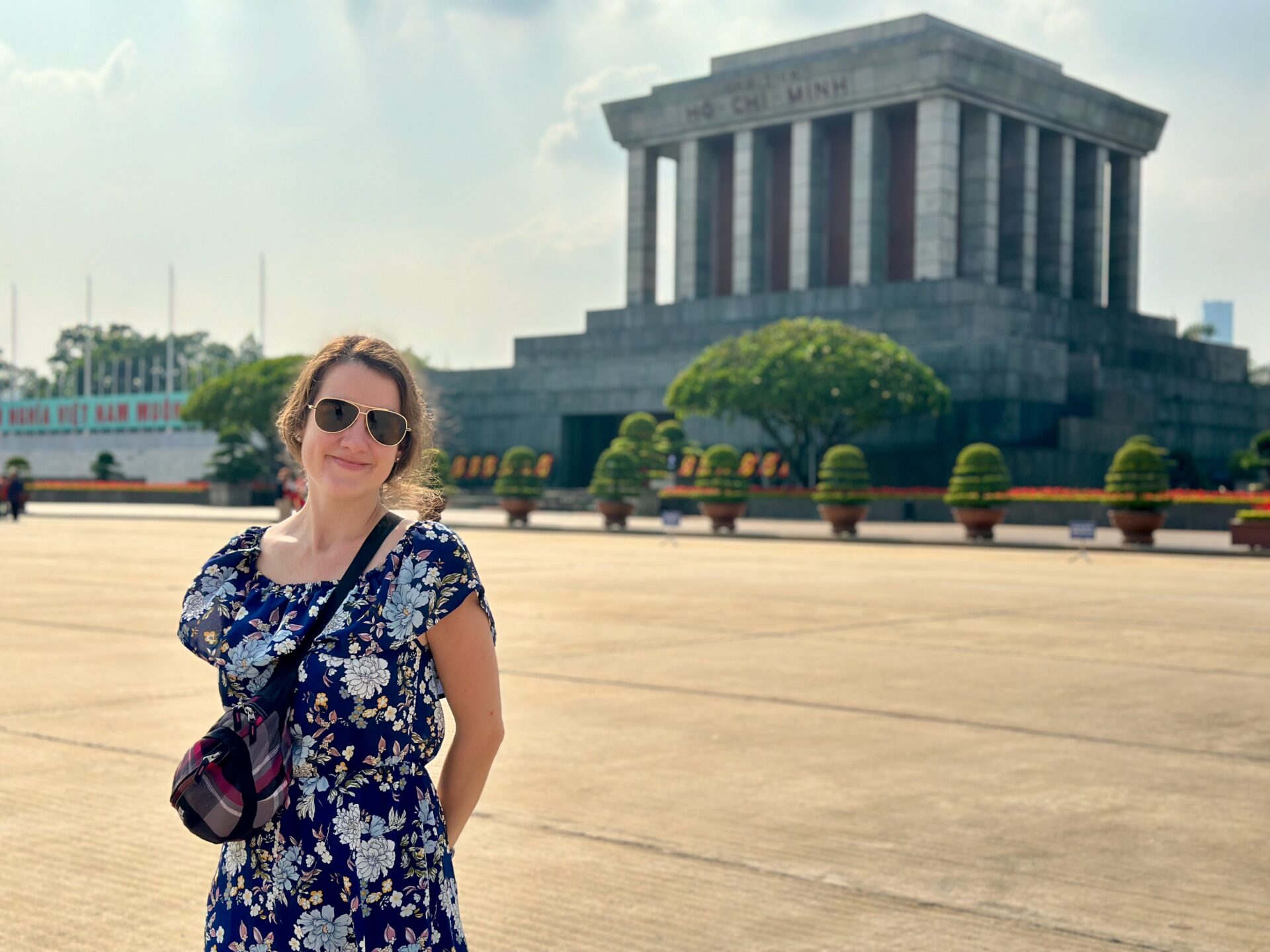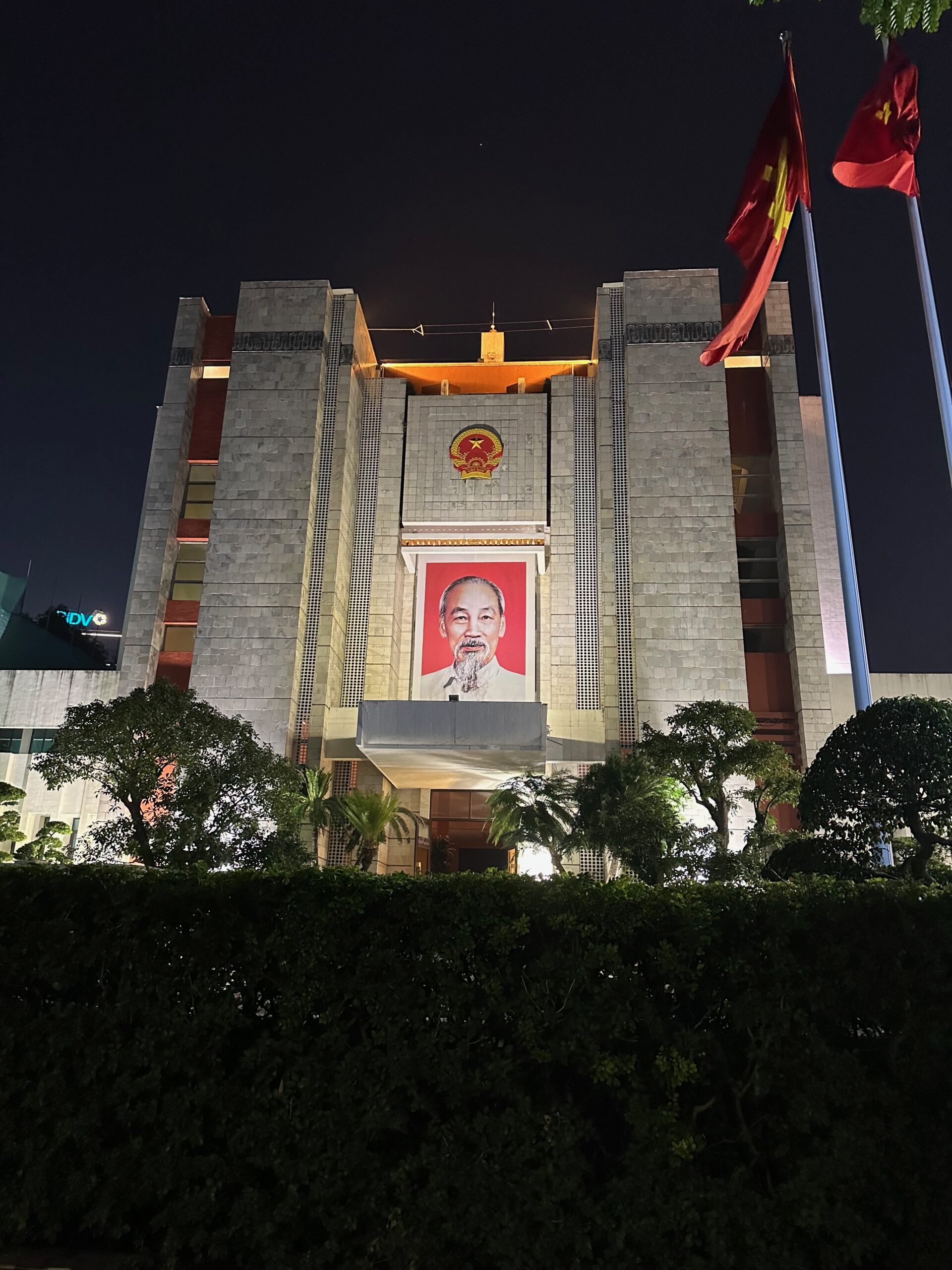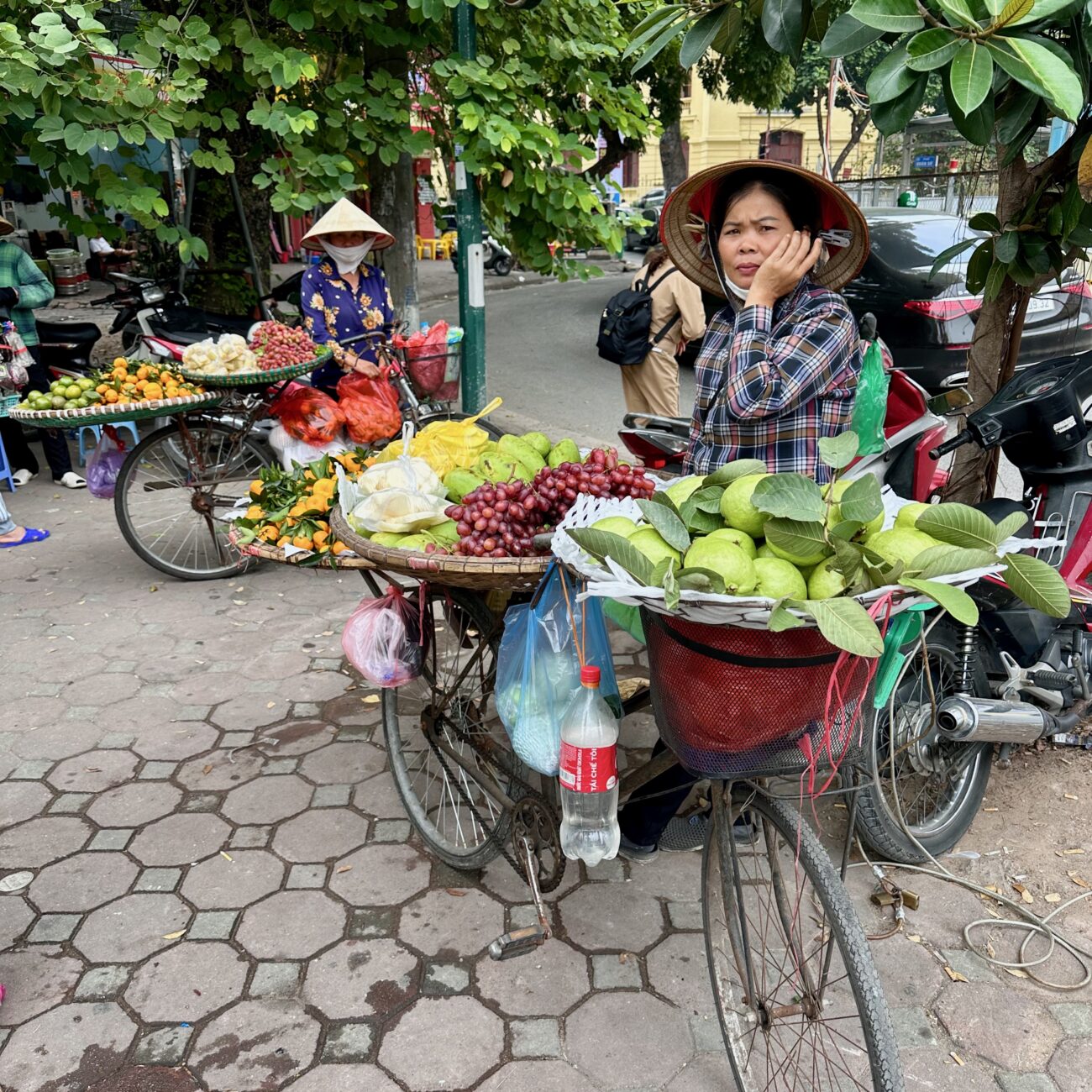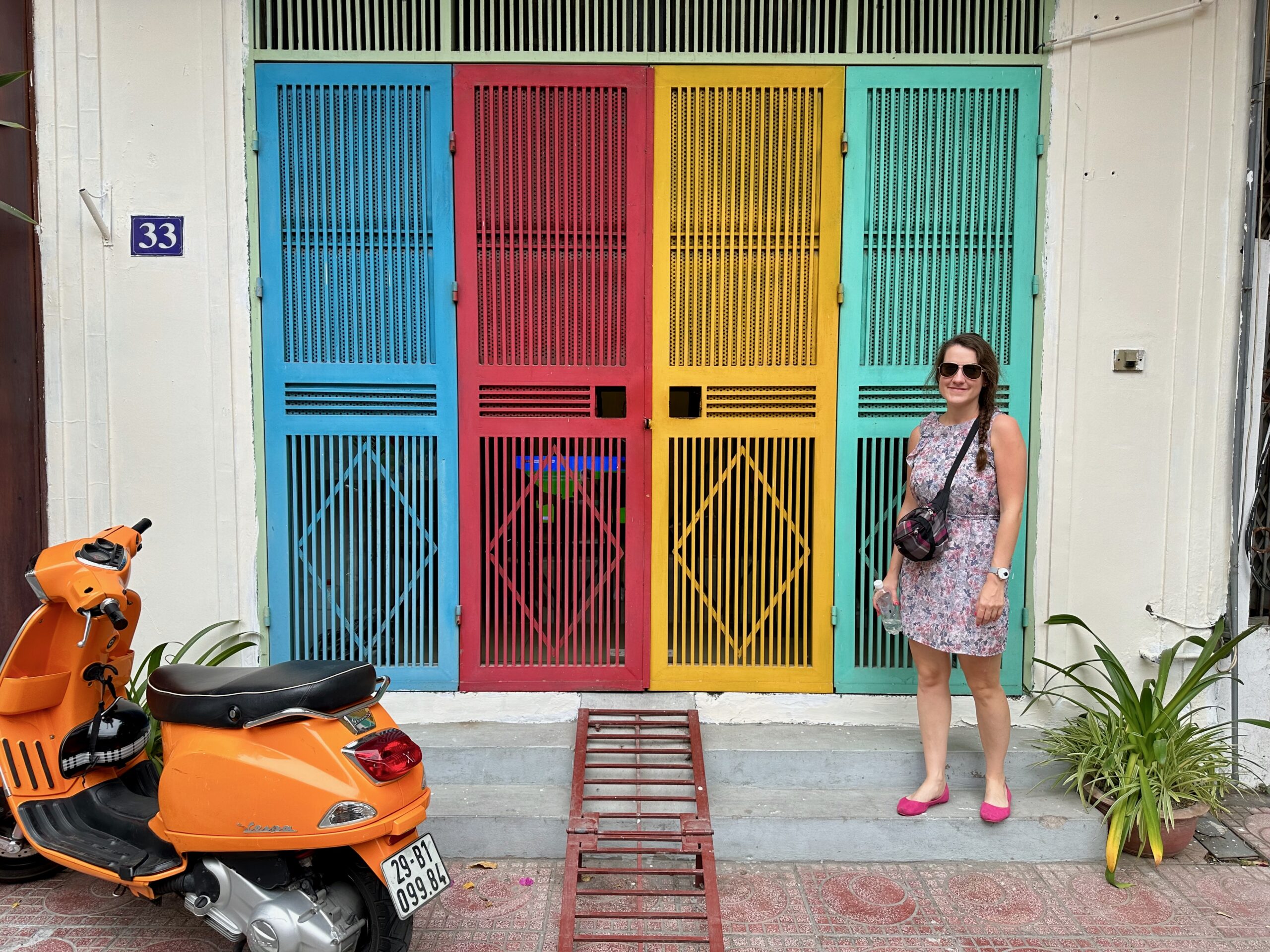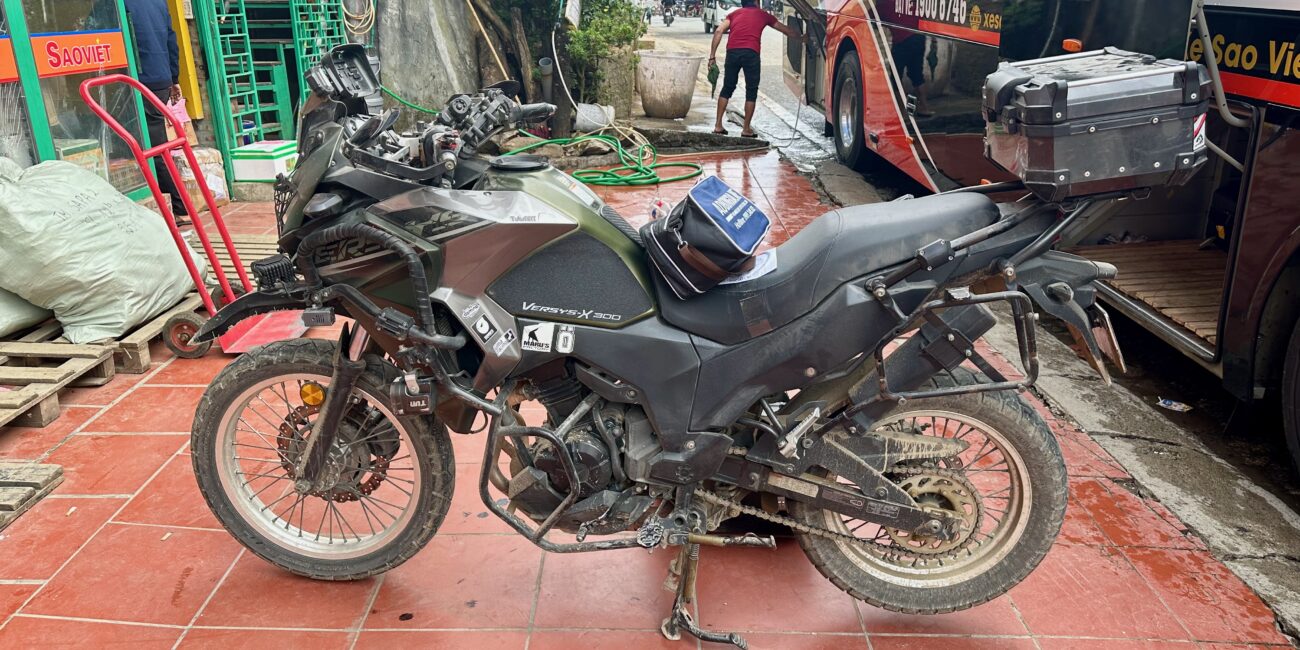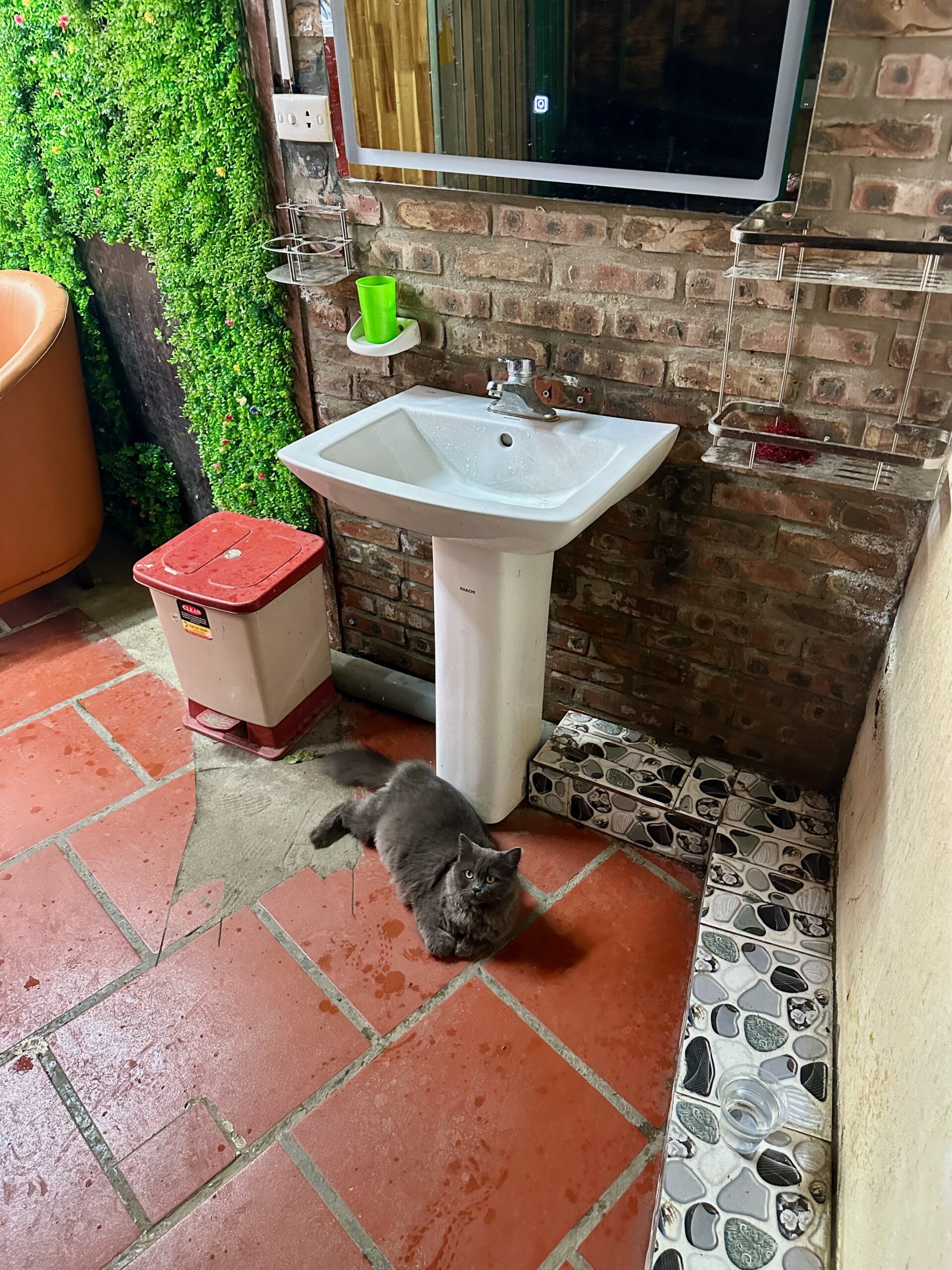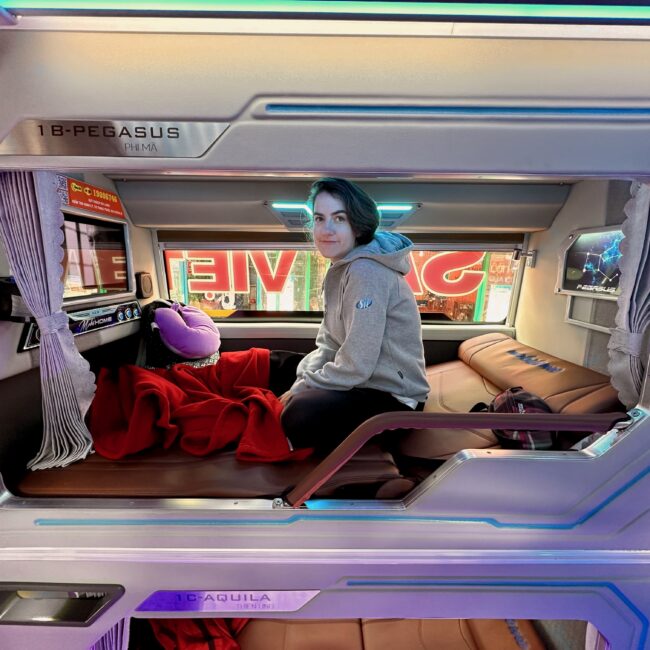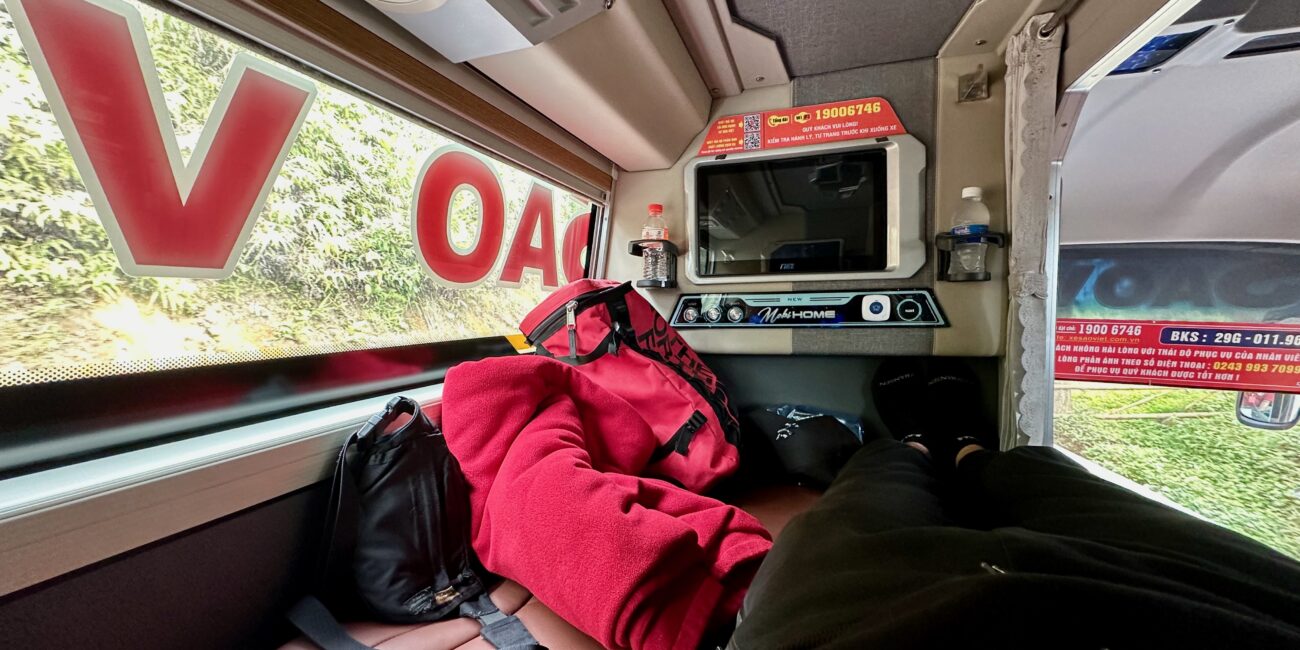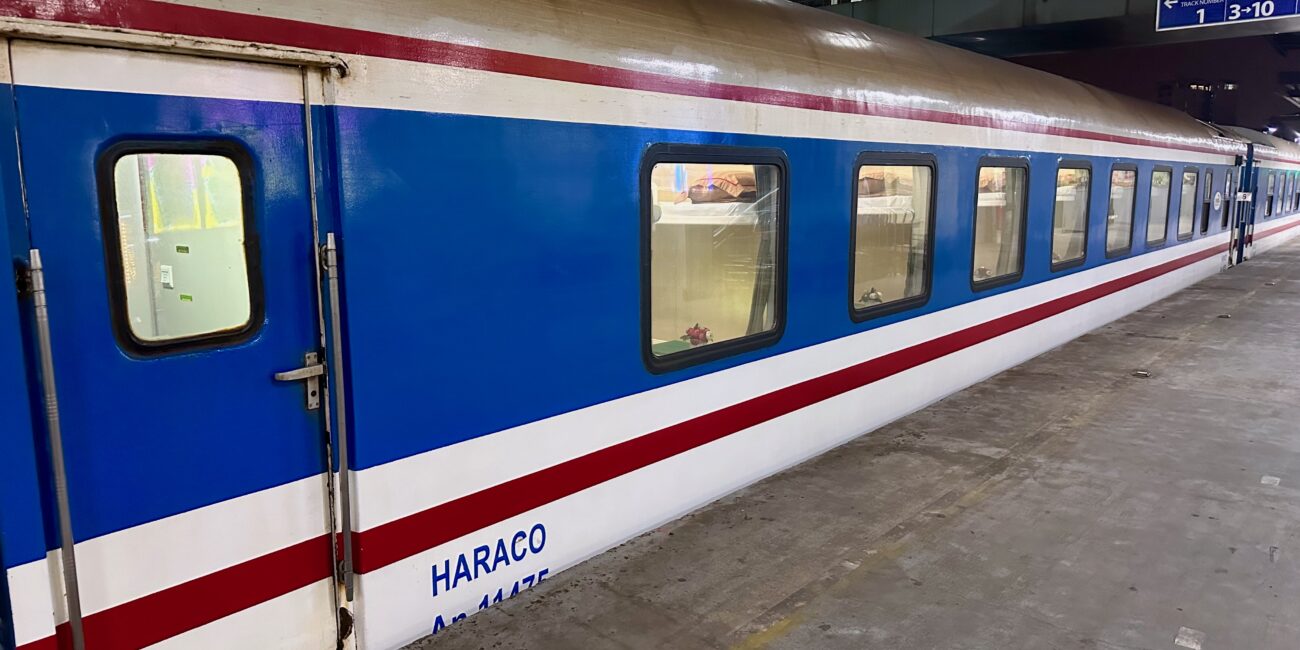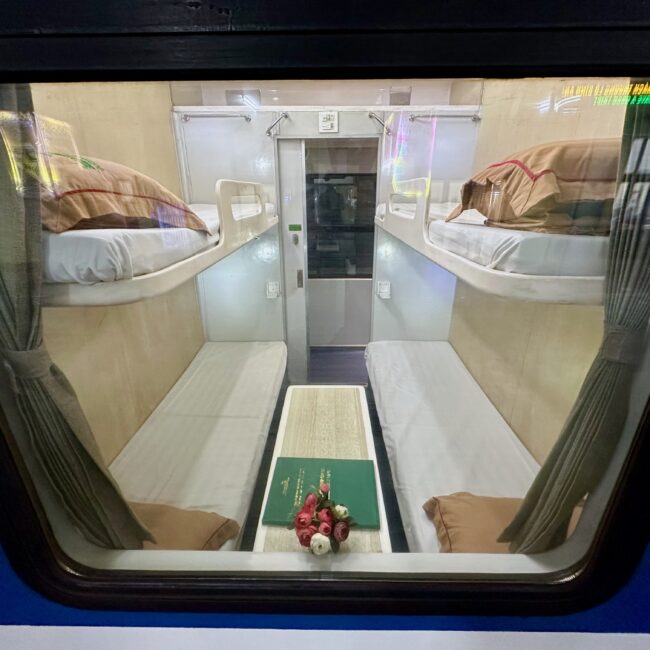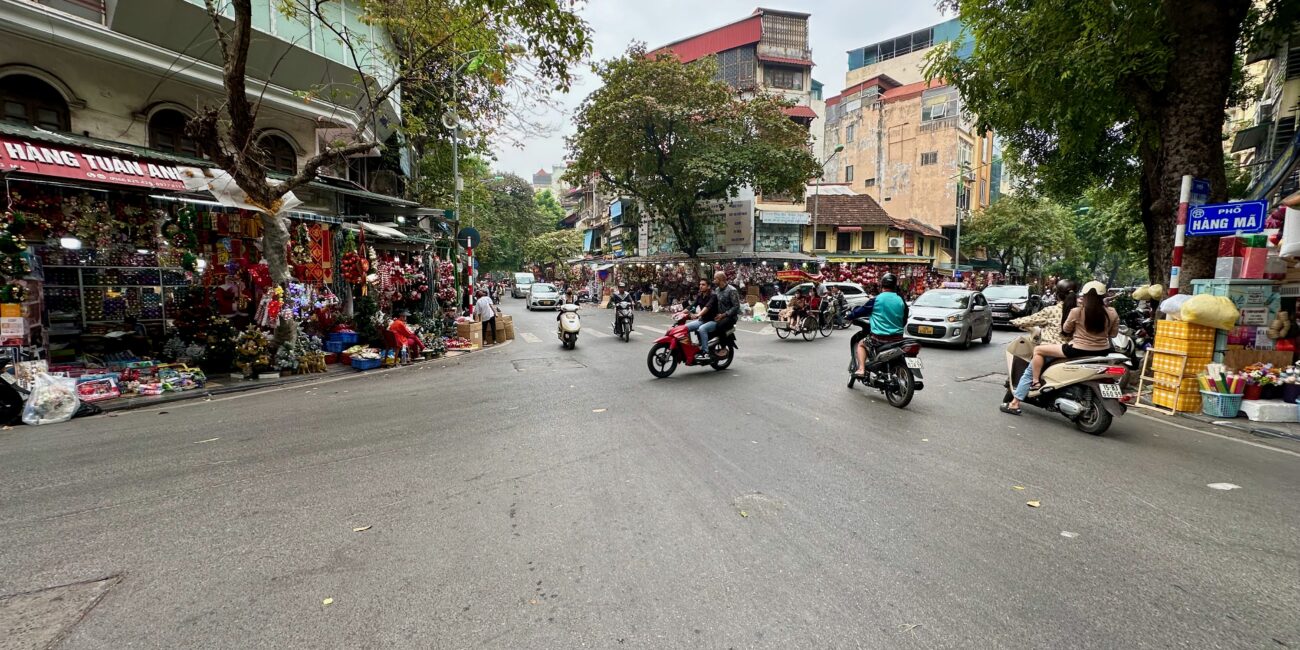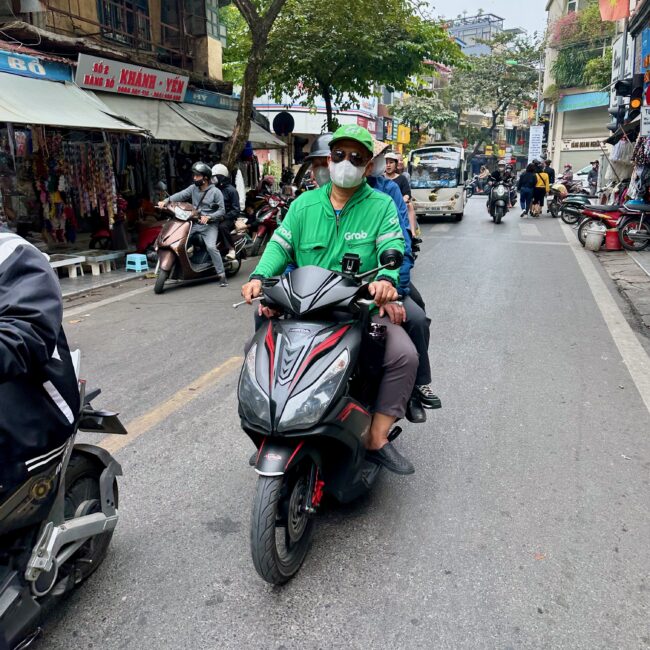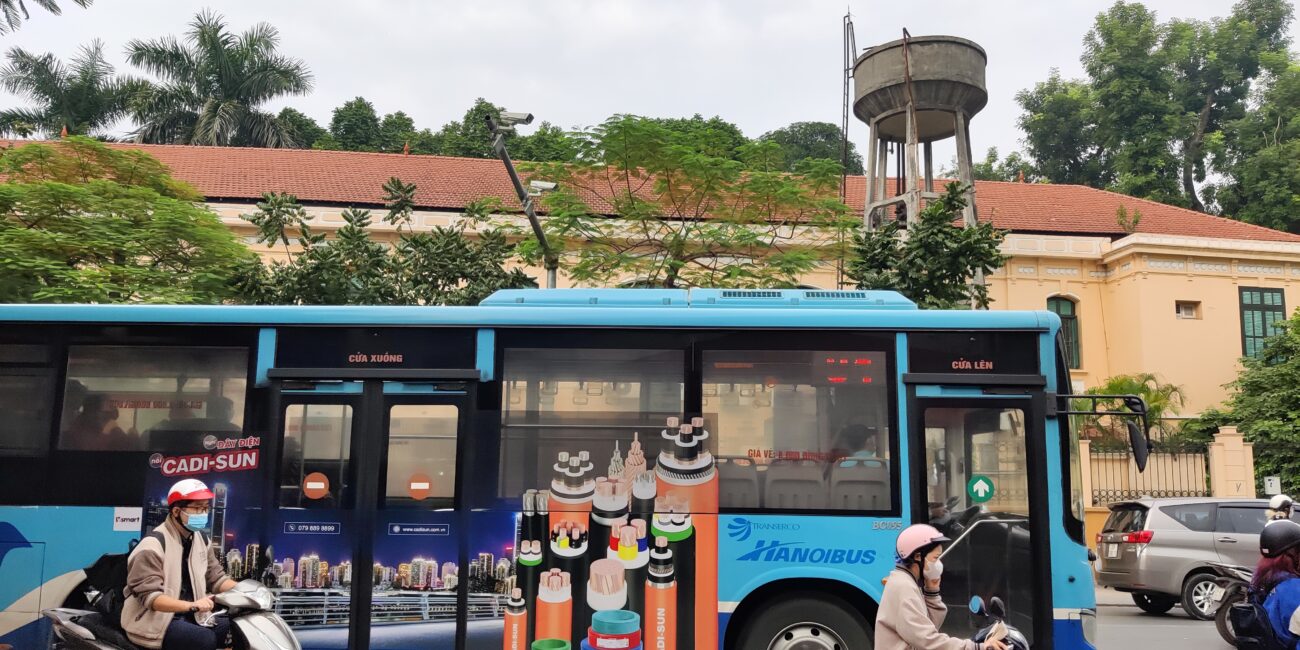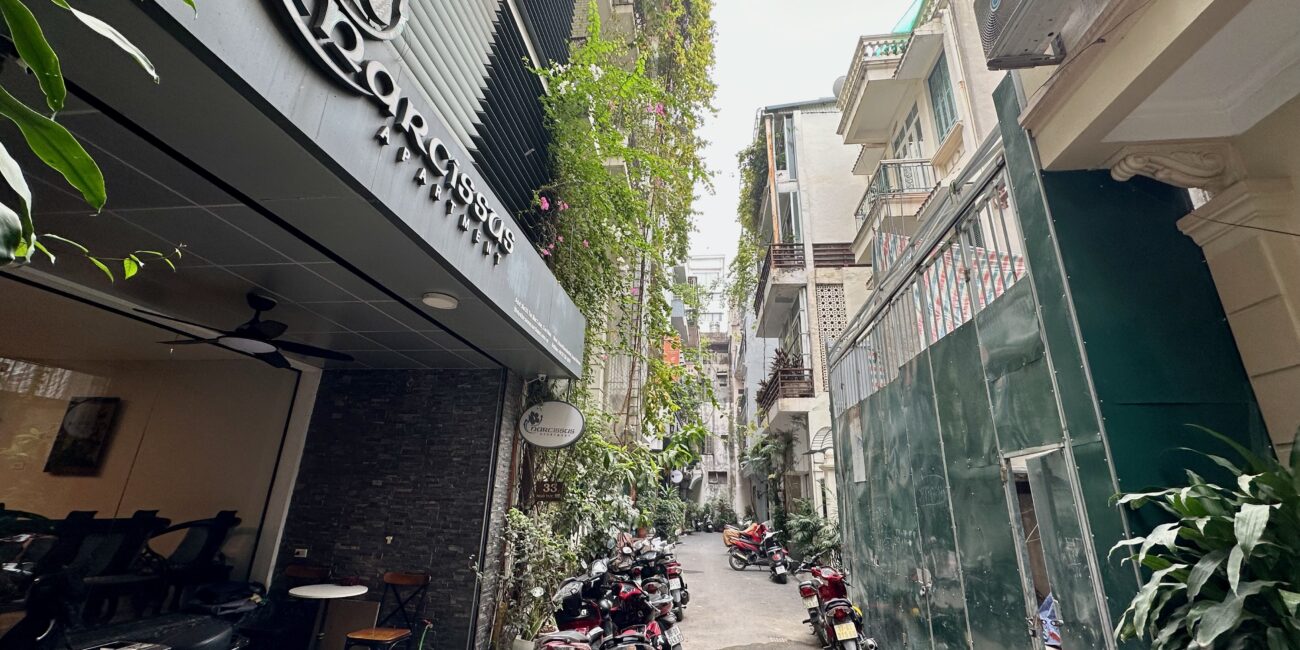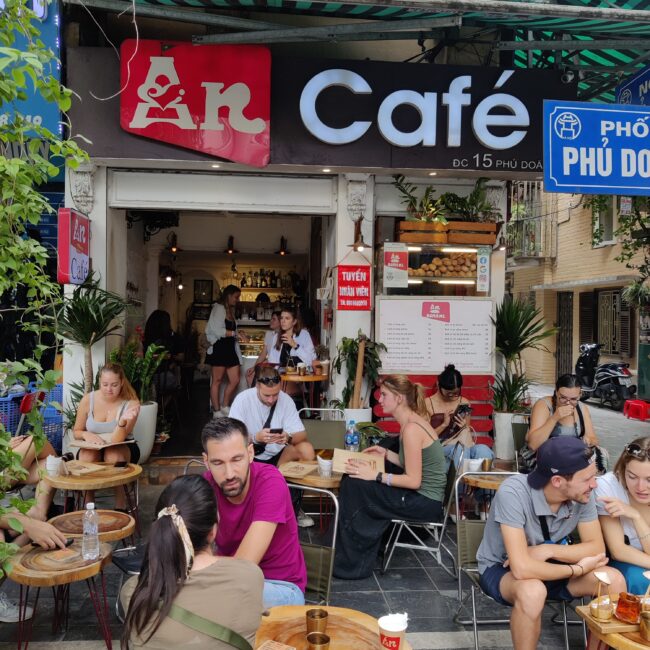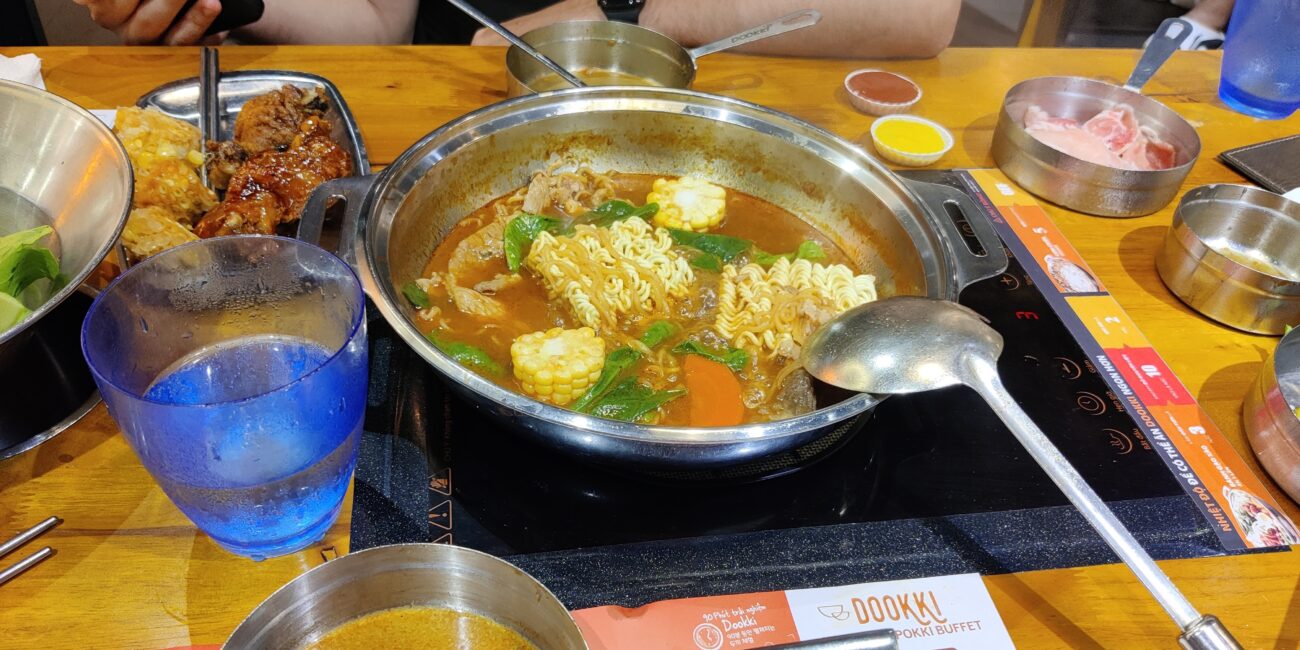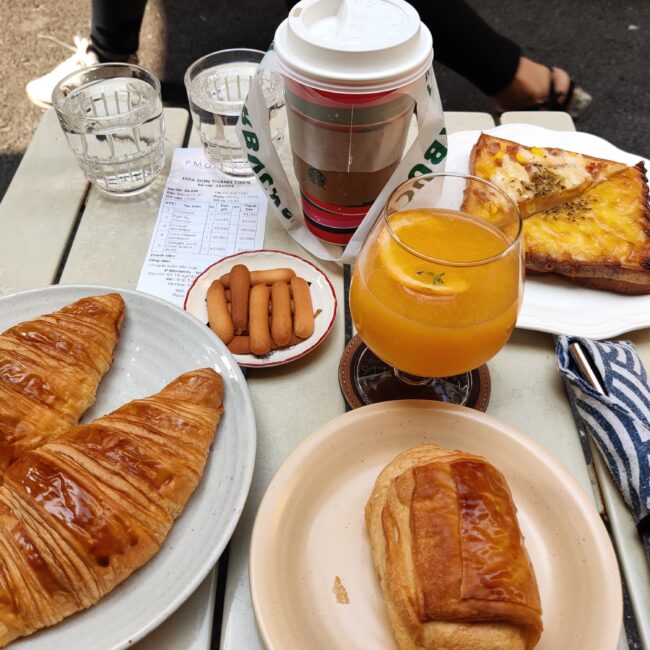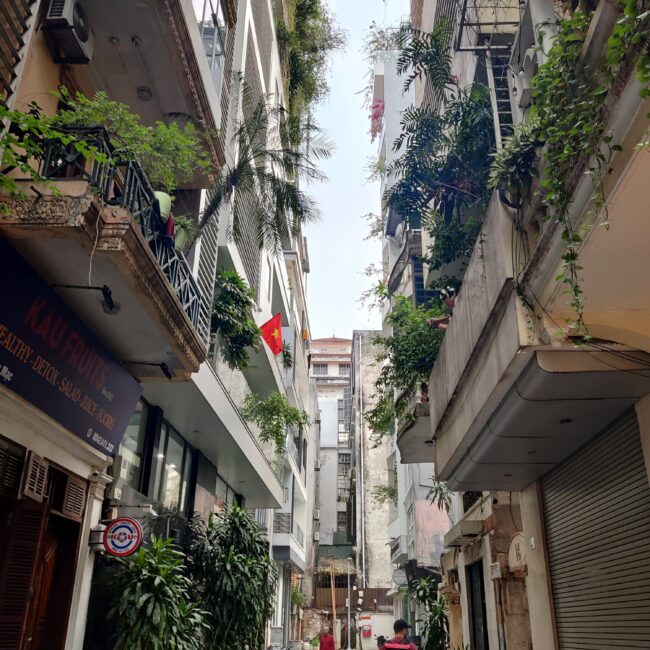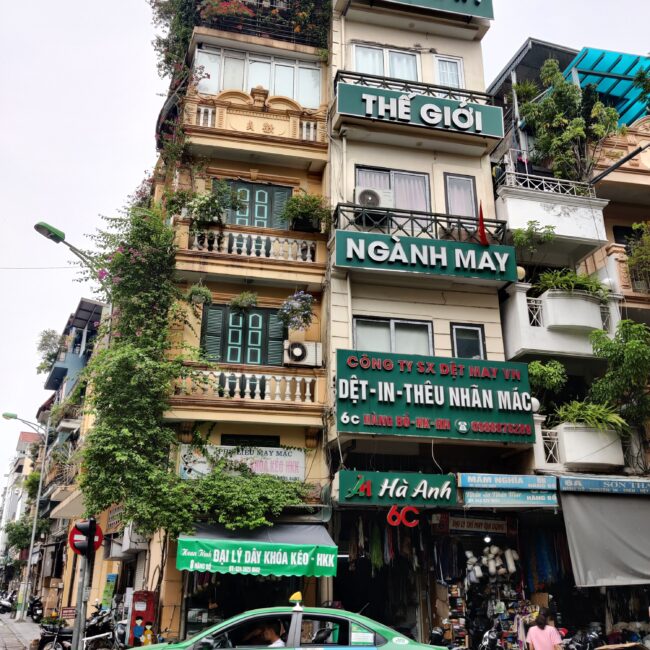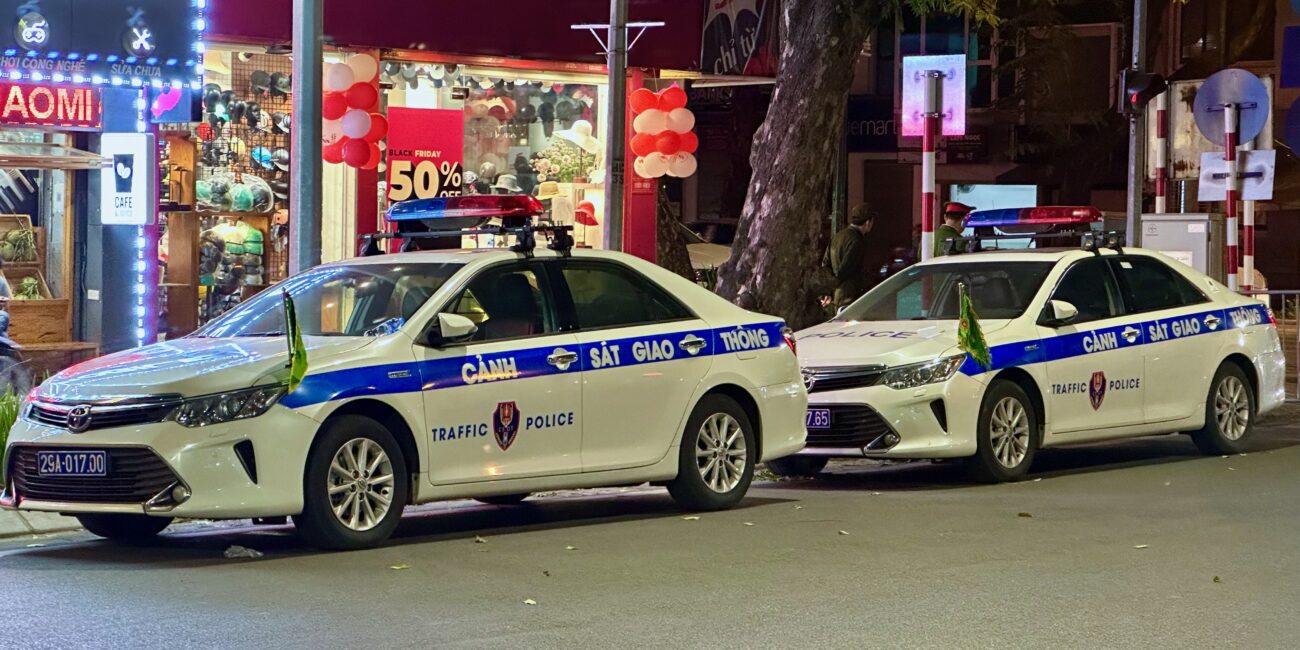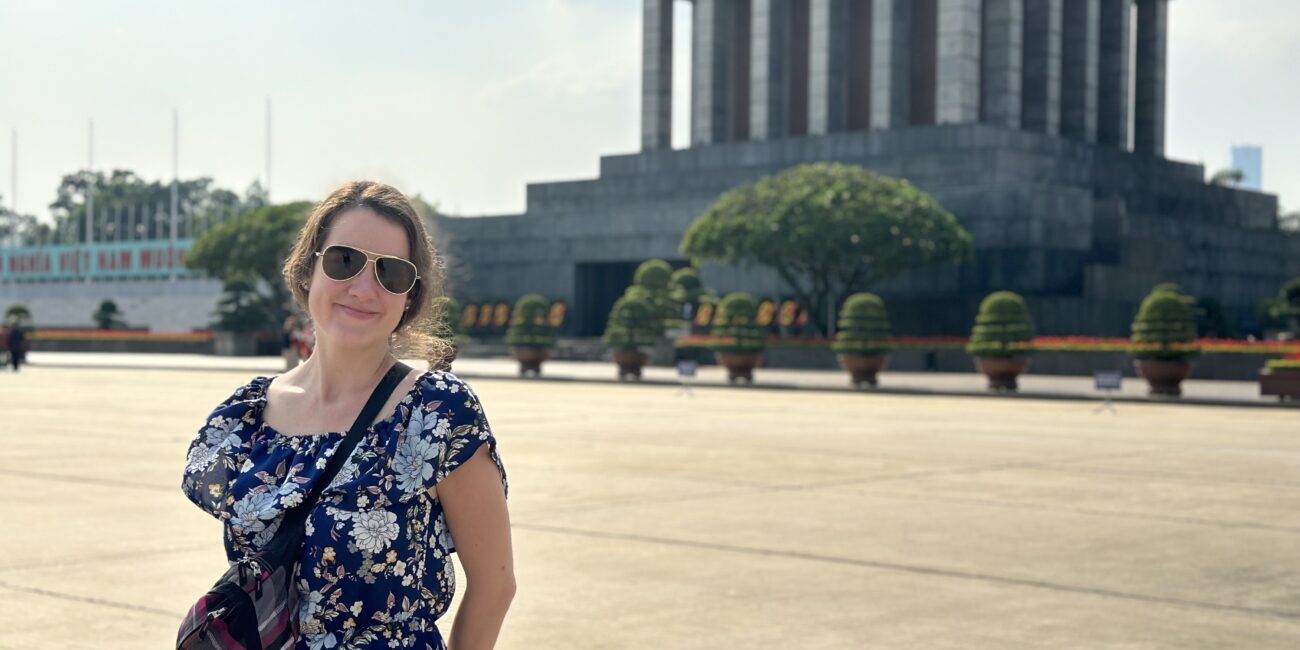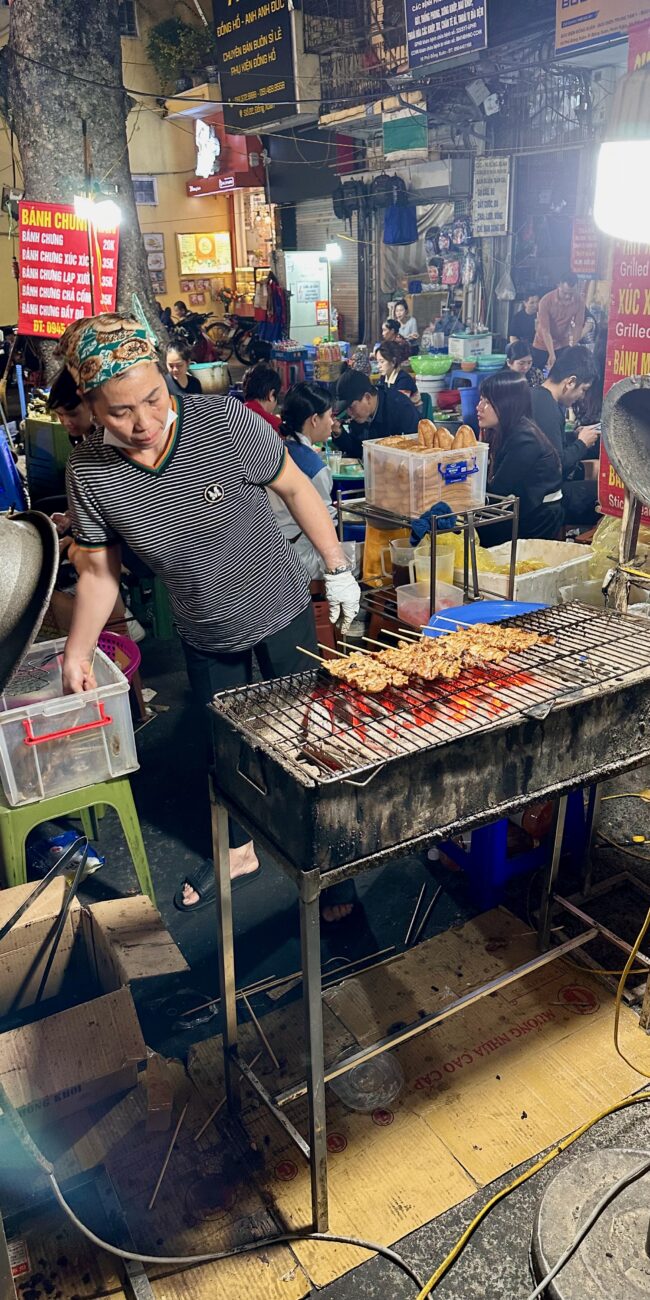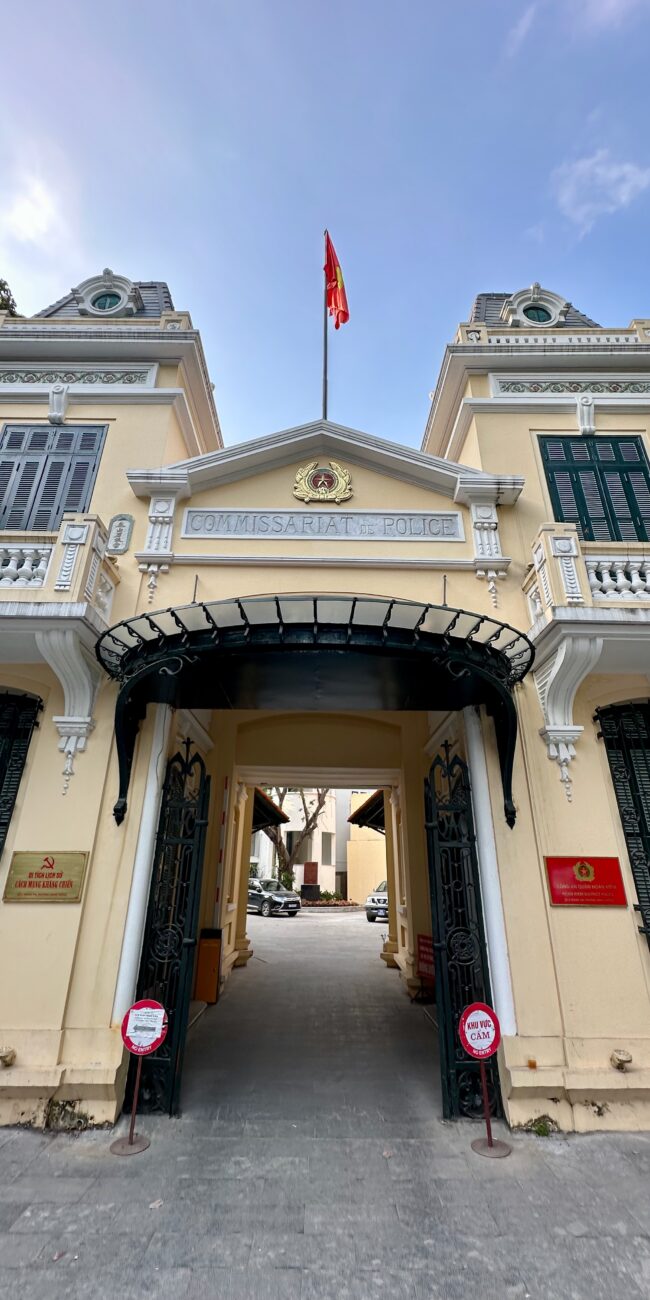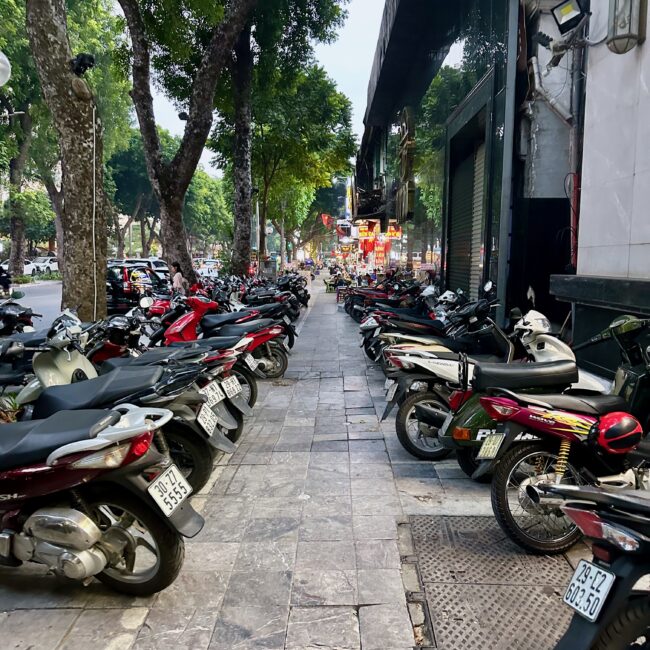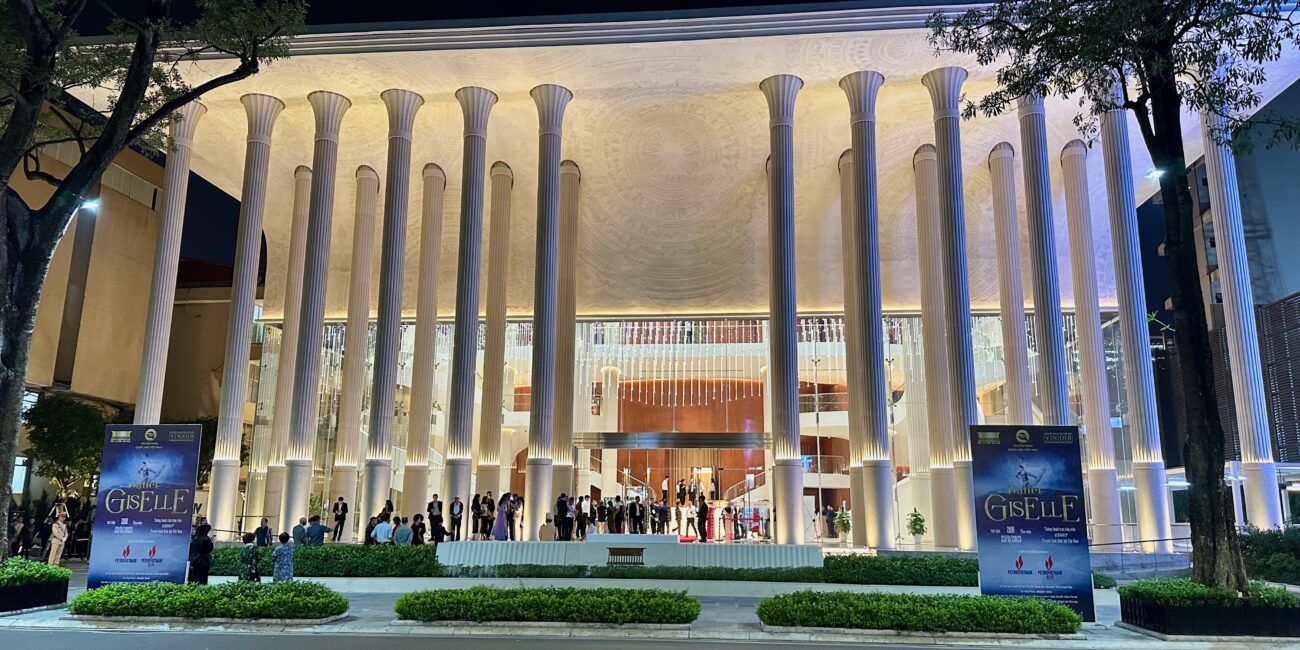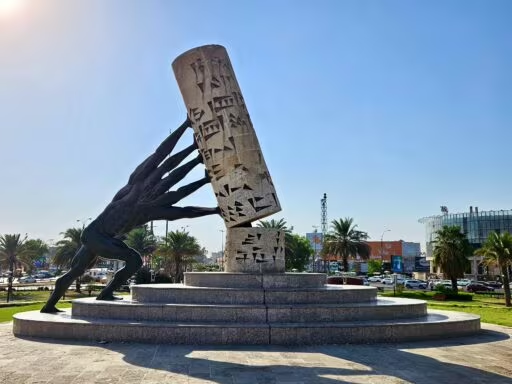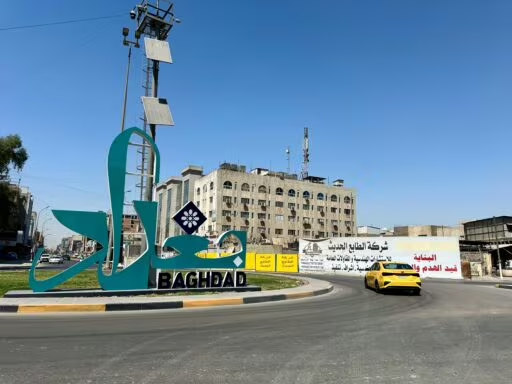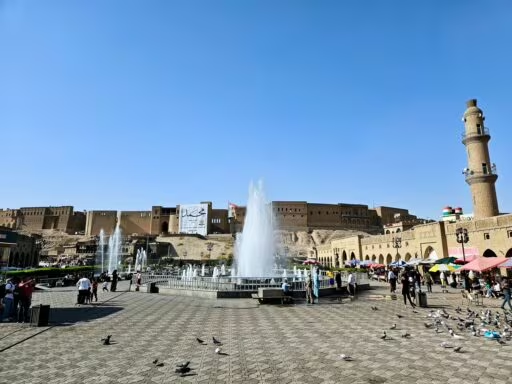This post is also available in:
Polski
Hello! 👋
We’ve arrived in Hanoi—the capital of Vietnam and our final stop on this journey. It’s a city that blends rich history, colonial architecture, and the daily hustle of an Asian metropolis. We were curious about what would surprise us here, while also being ready for a more intense atmosphere after the calmer Sa Pa.
A few more days of sightseeing, exploring local flavors and checking out what life is like in the heart of Vietnam awaited us in Hanoi.
If you haven’t yet read the previous parts of our journey, be sure to take a look:
- 👉 Ho Chi Minh City – the beginning of the adventure and first impressions of Vietnam,
- 👉 Da Lat – mountain climates and green landscapes,
- 👉 Da Nang – seaside views and excursions in the area,
- 👉 Sa Pa – rice terraces and mixed impressions.
Where is Hanoi located?
Hanoi, the capital of Vietnam, is located in the northern part of the country, on the western bank of the Red River, about 140 km inland from the South China Sea.
Hanoi features diverse terrain, including delta regions, upland areas, and mountainous zones. Generally, the land gradually slopes downward from north to south and from west to east, with an average elevation ranging from 5 to 20 meters above sea level. The northern and western parts of the city are home to hills and mountainous areas, with the highest peak, Ba Vì, reaching 1,281 meters, located to the west of the city center.
Thanks to its strategic location along the Red River, Hanoi has long served as a key political, cultural, and economic center of Vietnam. The river’s proximity not only fostered the development of trade and communication but also influenced the city’s unique landscape, where numerous lakes, such as Hoan Kiem and West Lake, add charm to the urban scenery.
Hanoi’s location in the Red River Delta means that the city is surrounded by fertile agricultural land, playing a crucial role in supplying the metropolis with fresh produce.
Departing from Sa Pa for Hanoi
This time, we decided to travel by bus, but not with the company we had used for the trip to Sa Pa. After our average experience with Hello Kitty, we decided to give another carrier a chance.
We wanted to make sure we compared at least three companies during the trip—so that in the future, we’d know which carrier is worth choosing.
🚉 We set off from the base of the bus carrier
We bought tickets for the trip from Sa Pa to Hanoi on the Sao Viet website. I must admit that their booking platform is a bit clunky and not very intuitive, but in the end, we managed to make the reservation correctly. What’s important is that during the purchase, you immediately specify the pickup location for the driver.
We paid for the tickets online with a card, which was very convenient. On the day of departure, we waited for the bus that would take us to the company’s main base in the center of Sa Pa. The driver didn’t speak English, but he knew exactly what to do—collect our luggage, pack us into the vehicle, and drop us off at the right spot. As for the mini-bus? Well, it was a bit worn out, but still managed to do the job. 😅
When it comes to contact with the carrier, the helpline mainly handles conversations in Vietnamese, but if you say “English” at the start, someone will be able to assist you. We also managed to communicate through WhatsApp, which really made things easier. WhatsApp is a real lifesaver in Vietnam—it’s often useful for arranging details, making reservations, or confirming departure times.
🚌 Riding in a sleeper bus
After checking the tickets, it was time for our last long bus ride—and we have to admit, this time the standard was on a whole different level! Compared to FUTA Bus Lines or Interlines, the Sao Viet bus turned out to be an absolute winner.
We ended up on the Sleeper Bus VIP, which had two rows of double-decker beds—much more space to lie down, more comfortable mattresses, and large windows, allowing us to enjoy the views along the way. The ride was truly pleasant, and the level of comfort was very high.
As with every sleeper bus, we boarded without shoes—placing them in a bag at the entrance, and spending the rest of the journey in socks or slippers. Along the way, we had one stop to stretch our legs and use the restroom.
Interestingly, during the trip, the driver was breathalyzed by the company’s own staff. This really impressed us, as we hadn’t encountered such a safety standard with other carriers before. It’s clear that the company cares about passenger comfort and safety, which definitely boosts our trust in this carrier.
🚏 We arrived in Hanoi
Our journey to Hanoi was coming to an end, but we still had a few transfers along the way. From the main stop on the outskirts of the city, the carrier took us by minibus to Số 7 Phạm Văn Đồng, Cầu Giấy, Hà Nội – where we had set our final destination.
Once we arrived, we quickly ordered a Grab, which showed up to pick us up in just a few minutes. It was a good thing we opted for this option, because the motorbike drivers who tried to convince us to use their services completely didn’t understand the concept of transporting two people with large suitcases. Honestly, it’s hard to imagine how that would have worked. A nightmare! 😂
We almost made it to the accommodation itself. It turned out that the main road leading to the hotel was under construction, so we had to walk the last stretch. It’s a shame the owner didn’t inform us about this inconvenience beforehand—we could have prepared better for it.
How to get to Hanoi?
🚗 By car or 🏍️ By motorcycle
The car journey usually takes between 30 to 40 hours of continuous driving, depending on the chosen route and road conditions. The most popular route is National Road QL1A, which runs along the coastline, offering views of the sea and access to coastal towns. Alternatively, you can choose the Ho Chi Minh Trail, which passes through mountainous terrain and is less traveled, making it an attractive option for those looking for a quieter journey.
Regardless of the chosen mode of transportation, it’s important to carefully plan the route, taking into account accommodation options, fueling points, and tourist attractions.
Make sure the vehicle is in good technical condition. For motorcycle trips, it’s recommended to have proper protective gear and experience in long-distance riding.
🚆 By train
The train journey to Hanoi, especially from Ho Chi Minh City, is an option for those who have the time and want to experience Vietnam at a slower pace. The route is over 1,700 kilometers long and takes about 33-36 hours, so it’s important to prepare well—for both the mental and logistical aspects.
Trains run regularly, and there are different classes to choose from—ranging from basic seats to more comfortable sleeper berths in 4-person compartments.
But beware! Traveling by train in Vietnam isn’t always a smooth ride from point A to point B. You need to be prepared for the possibility that things may go wrong. There are stories online about hours-long stops along the way—caused by breakdowns, track work, or other surprises. In such cases, you might find yourself stuck somewhere in the middle of nowhere—without signal or access to shops or restaurants.
That’s why it’s a good idea to bring enough water, food, and something for entertainment—books, offline shows, or music. Just in case, it’s also wise to have a power bank with you.
Tickets can be purchased online—either through the official Vietnamese railway website or local intermediaries—but it’s definitely worth booking them in advance.
🚌 By bus
The bus journey from Hanoi to Ho Chi Minh City is a popular option for many travelers, offering the opportunity to see a variety of landscapes across Vietnam. The route is approximately 1,600 kilometers long, and the travel time typically ranges from 35 to 38 hours, depending on the carrier and road conditions.
It is recommended to book tickets in advance, especially during the tourist season, to secure a seat and take advantage of better prices. Tickets can be purchased online through the carriers’ websites.
The buses on this route are mainly sleeper buses, equipped with reclining seats, which increase comfort during the long journey. However, standards can vary depending on the carrier. It’s a good idea to bring snacks, water, and warm clothing, as the air conditioning can be quite strong.
During the journey, there are regular stops for meals and restrooms. However, the standards of the rest stops can vary, so it’s a good idea to be prepared for basic conditions.
✈️ By Airplane
If time and comfort are important to you, flying is definitely the best way to travel between Hanoi and Ho Chi Minh City. The route is over 1,600 kilometers, so flying saves you hours on the road—the journey takes only about 2 hours.
Airfare prices are surprisingly affordable. Depending on the carrier and the booking date, you can find tickets ranging from 85 to 250 PLN.
For us, flying turned out to be the perfect choice for the return trip. 30 hours on a bus or train could have been exhausting, especially since we were already a bit tired from the intense sightseeing.
Traffic conditions
Hanoi is a city that lives at its own pace—and the traffic is the best reflection of that. Compared to smaller towns, it’s definitely more congested here, and at times, you might feel that the chaos on the roads is comparable to what we saw in Ho Chi Minh City.
🛵 Renting a scooter
We decided to skip renting a scooter in Hanoi—mainly because most of the places we wanted to visit were nearby, and we didn’t have time for longer trips. Still, scooters dominate the streets here. There are plenty of rental shops—ranging from small local spots to more professional companies. If someone plans to rent, it’s worth keeping a few basic things in mind.
🪪 International driving permit – In Vietnam, it’s required to have one compliant with the 1968 Vienna Convention, with a category A for motorcycles. Without this document, insurance will not apply, and in the event of a collision, you could be automatically deemed at fault.
Scooter condition – before renting, it’s important to carefully inspect the vehicle, checking the brakes, lights, and horn (which is used more frequently than the turn signals here). It’s also a good idea to take photos of any scratches to avoid issues when returning the scooter.
Passport? Never! – Do not leave your passport as a deposit. It’s better to pay a cash deposit or provide a copy of the document.
And the helmet – most rental shops offer them, but often in poor condition. If you’re planning longer trips, it’s worth investing in a better model.
🚦 Traffic reality
The city is characterized by intense and dynamic traffic. The streets are crowded with countless motorcycles, cars, bicycles, and pedestrians, creating a seemingly chaotic but functioning system.
Compared to Ho Chi Minh City, Hanoi may seem more traditional and somewhat quieter, but the traffic remains just as intense. The presence of traffic police is noticeable, especially in the central districts of the city. Officers often monitor traffic at major intersections and in areas with heavy traffic flow.
It’s worth noting that Vietnam follows right-hand traffic, and traffic regulations may differ from those in Europe. For example, the speed limit in built-up areas is 40 km/h for cars and 30 km/h for motorcycles.
Public transport
🚍 Public transportation
The bus network in Hanoi is well-developed, with numerous lines connecting different parts of the city. Buses are easily recognizable due to their red, white, and yellow coloring. Tickets cost between 7,000 and 10,000 VND, making them an affordable means of transportation. During peak hours, buses can be crowded, which is something to keep in mind when planning your trip.
🚇 Metro
The city is developing a metro system aimed at relieving street traffic and providing faster transportation. The first line, Line 2A (Cát Linh-Hà Đông), was launched on November 6, 2021. The second line, Line 3 (Nhổn-Ga Hà Nội), began operations on August 8, 2024. Currently, the metro system covers 21.6 km and 20 stations, with plans for expansion to 318 km with 8 lines.
🚖 Passenger transportation
In Hanoi, the Grab app works seamlessly, and we used it during our stay. It’s definitely a convenient option, especially as it allows you to avoid haggling with local taxi drivers.
If you’re paying in cash, the amount to be paid is exactly what the app shows—no hidden fees. However, it’s important to stay alert, as some drivers may try to demand tips or claim that the amount displayed is too low.
We had an instance where the driver tried to overcharge us, providing unclear reasons. Only a firm response (and a slight increase in volume) cooled his attempts. Fortunately, such cases are more of an exception than the rule, but it’s always good to be prepared for any potential unpleasantness.
Accommodation
We stayed at Narcissus Hotel and Apartment, which at first glance seemed pretty decent. A quiet neighborhood, and the location near Hanoi Railway Station – it could have been good.
However, the surprise came with the inability to drive directly to the hotel. The street was closed to vehicle traffic due to construction work, so we had to walk the last stretch. It wouldn’t have been so frustrating if we didn’t have to carry our suitcases over uneven sidewalks.
The room was spacious and clean, which definitely worked in its favor. However, opening the window was nearly impossible—on one side because of the noise from the construction, and on the other due to the omnipresent dust. It was a shame because, in such a place, you’d expect a bit of relaxation after a whole day of sightseeing.
We managed to pay for the accommodation with a card, which is not always a given in Vietnam. Unfortunately, when it came to arranging breakfast, we were unsuccessful. The staff’s English was so limited that, in the end, we gave up on that option.
Food
This place didn’t disappoint us when it came to food. Unlike in smaller towns, here it’s definitely easier to find something for everyone—whether we’re craving local cuisine or looking for more Western flavors.
Northern Vietnam, including Hanoi, has a distinct culinary style compared to the south. The dishes here are less sweet and more intense, with a stronger emphasis on salty and sour flavors. Spices are used more sparingly, making the food milder compared to its southern counterparts.
If someone starts craving Western flavors, there’s no problem—Hanoi has both fast food spots and upscale restaurants serving European, Korean, and Japanese cuisine.
Exchange office or ATM?
When it comes to access to cash, there are ATMs practically everywhere in Hanoi—both in the city center and on the outskirts. You’ll have no trouble finding machines that accept international payment cards.
It’s worth noting the fees, however. Some banks charge withdrawal fees, so it’s best to use trusted operators like TPBank or VPBank, which often offer more favorable conditions.
Exchanges? They are available, especially in tourist districts, but we opted for the convenience of ATMs. However, if someone decides to exchange cash, it’s a good idea to check the exchange rates beforehand and make sure the place is operating legally.
In local eateries, markets, or street food vendors, card payments are rare—cash is king. It’s a good idea to have small denominations on hand.
It’s also worth considering carrying two payment cards—just in case. A malfunction, blockage, or loss can happen, and access to cash while traveling is essential.
Climate and weather conditions
Hanoi is located in the northern part of the country, which gives it a tropical monsoon climate. In practice, this means clearly defined four seasons, which sets it apart from southern regions like Ho Chi Minh City, where the tropical climate predominates.
From December to February, Hanoi can get quite chilly. Temperatures can drop to 10–15°C, and sometimes even lower, especially at night. The windy weather can make it feel even colder. This is the time when a jacket or warmer sweater comes in handy, especially during morning sightseeing.
The summer season lasts from May to September and is definitely the hottest and most humid time of the year. Temperatures often exceed 35°C, and the high humidity makes it feel like being in a sauna. This is also the time when heavy rain showers can occur, mainly in the afternoons and evenings—a typical feature of the monsoon season.
March–April and October–November are the months when the weather in Hanoi is most pleasant. Temperatures hover around 20–25°C, rain is less frequent, and the air is more comfortable. It’s the perfect time for city walks and sightseeing.
Safety
Although the city is generally safe, it’s important to stay alert in certain situations to avoid unpleasant experiences.
Pickpockets may operate in crowded areas like markets, night bazaars, or shopping streets. It’s best not to expose expensive cameras, jewelry, or large amounts of cash. We tried to carry only the amount of cash we needed for the day, keeping the rest in a safe place at the hotel. Additionally, a money belt under clothing worked great for storing documents and cards.
The famous Train Street in Hanoi, where trains pass right next to buildings, has become a popular tourist attraction. Unfortunately, with its popularity, certain dangers and scams have also emerged:
- Entry fees: Although it’s a public space, some local “entrepreneurs” may try to charge a fee to enter the street. It’s best not to fall for this.
- Mandatory purchases at cafes: Some shop owners near the tracks may require you to buy drinks or food in order to use the best viewing spots. It’s a good idea to ask about prices beforehand to avoid any unpleasant surprises.
It’s also worth remembering the local emergency number, 113, for the police—just in case, although fortunately, we didn’t need to use it.
What else is worth keeping in mind?
One of the most common issues is dishonest scooter and rickshaw drivers. They may lure you with a low fare, but once you reach your destination, they suddenly demand a much higher price, citing made-up additional charges. It’s better to use apps like Grab, which provide fixed prices upfront.
Another issue is fake tickets for attractions. If something seems suspiciously cheap, it’s best to stay away. It’s advisable to use official sales points or book tickets through trusted apps.
Restaurants and bars are also places where you might encounter various tricks. A lack of prices on the menu or charging for napkins or snacks served without an order are unfortunately common practices. It’s best to ask about everything before placing an order—this will save you unnecessary stress.
You should also be cautious of fake police officers who may try to extort money under the pretext of alleged violations. In such cases, it’s best to demand going to the police station, which often effectively deters the scammers.
Places we were able to see
During our stay in Hanoi, we managed to visit a few interesting places that are definitely worth seeing while in the capital of Vietnam. 🌿
If you’re curious about what exactly we visited, be sure to check out our separate post, where we describe all the places we explored. ✨
Summary and return to the country
And that’s a wrap on our journey through Vietnam. Nearly a month spent in this country allowed us to see a lot. As it often happens, there’s always something we didn’t manage to visit. In some places, we could have spent more time to better immerse ourselves in the atmosphere and everyday life.
What definitely stayed with us were the huge contrasts between the cities—from the hustle and bustle to the picturesque views. Each place was different, each surprised us in some way. It’s hard to compare it all to European realities because Vietnam is a completely different world—and I think that’s exactly what we’ll remember it for.
When it comes to food… there were plenty of emotions here too. 😂 We tried local specialties, had a few culinary mishaps, but also found some real gems. We learned that you have to keep your eyes open—both when it comes to transportation and ordering meals.
Return via Kuala Lumpur
Our return journey was with Turkish Airlines via Kuala Lumpur. However, we first had to make our way there from Hanoi. The plan involved a Vietjet Air flight to Ho Chi Minh City, followed by a transfer to the international flight to Malaysia.
And this is where things started to go wrong… One of our flights was delayed, which completely messed up our logistics. Vietjet Air, being a budget airline, wasn’t very eager to help—especially since the flights weren’t on the same booking. After a long battle over the phone, we finally managed to reschedule the connection so that we could still make it to our subsequent flights.
Once we arrived in Ho Chi Minh, we had to pick up our luggage and check it in again for the international flight. On top of that, we had passport control and long queues, but in the end, everything went smoothly. Phew…
Thank you for joining us on this journey – until next time! ✌️

